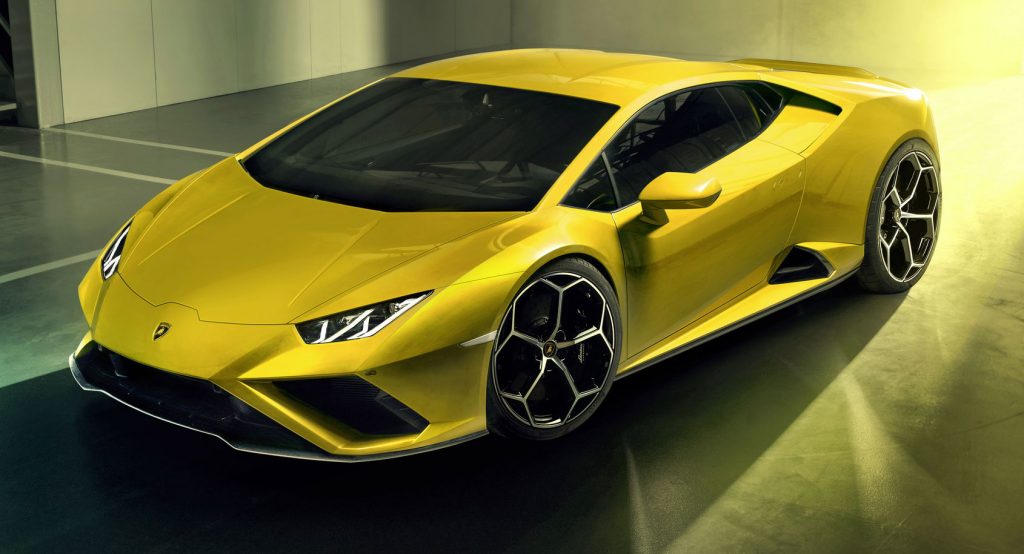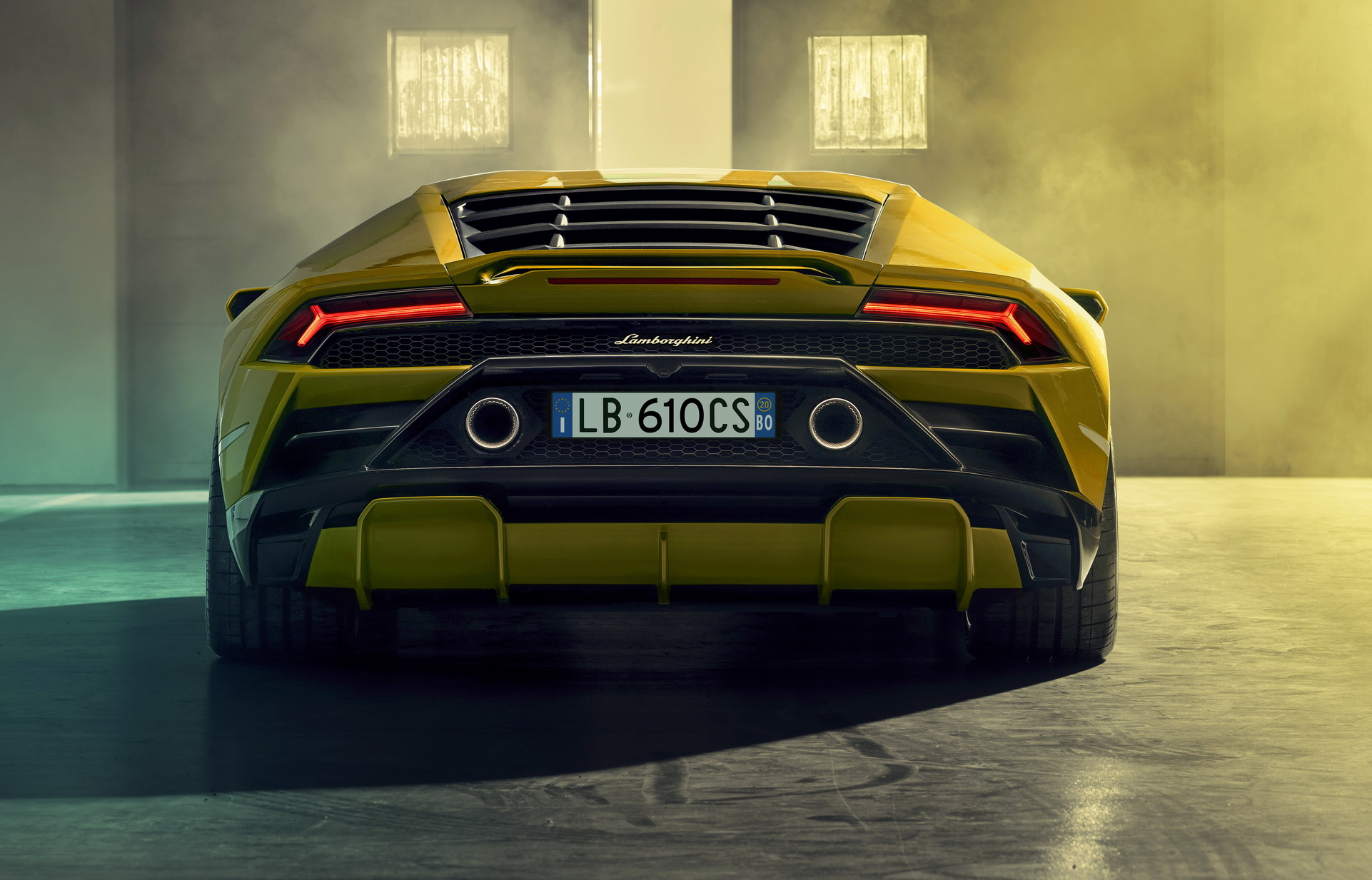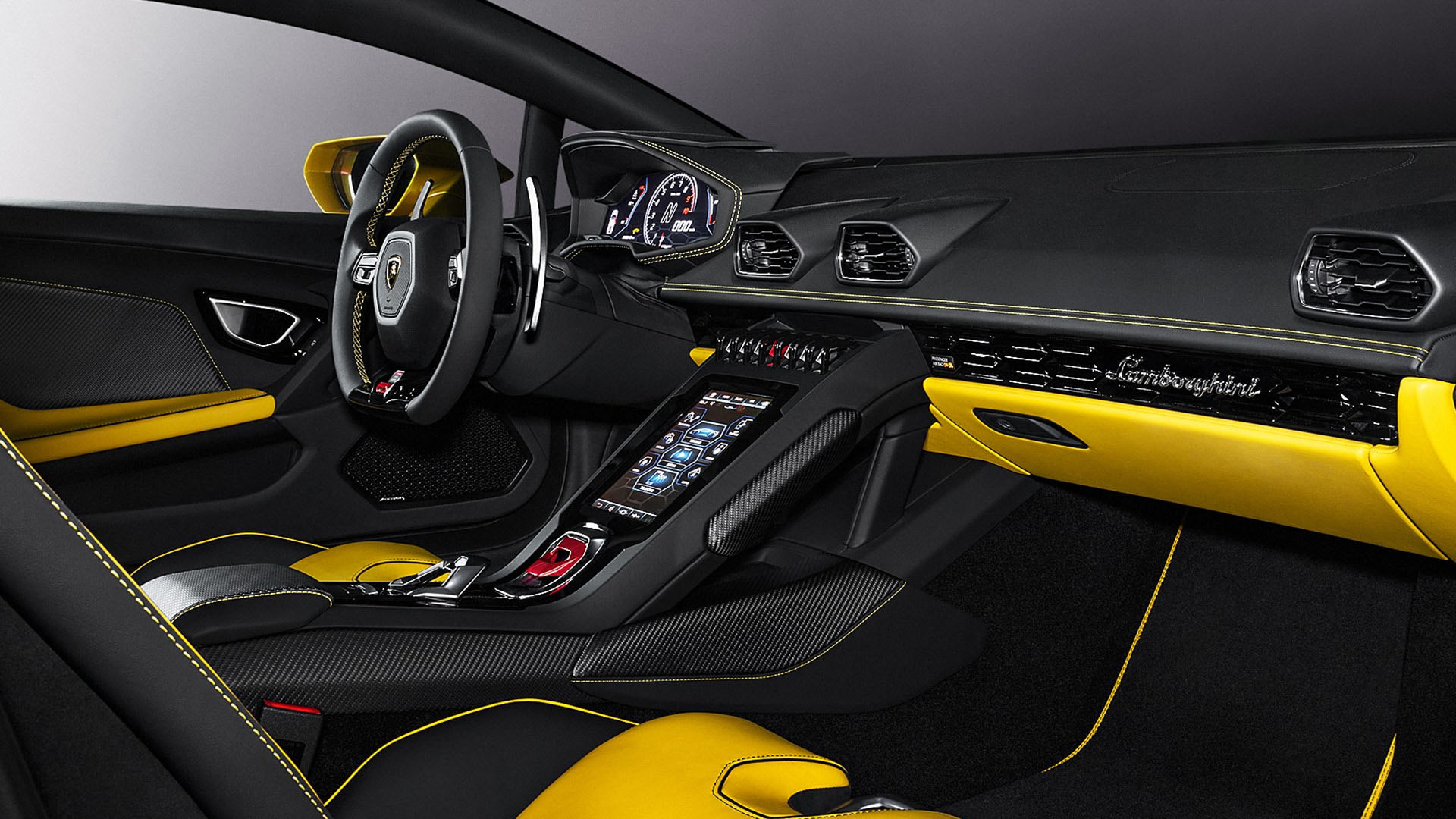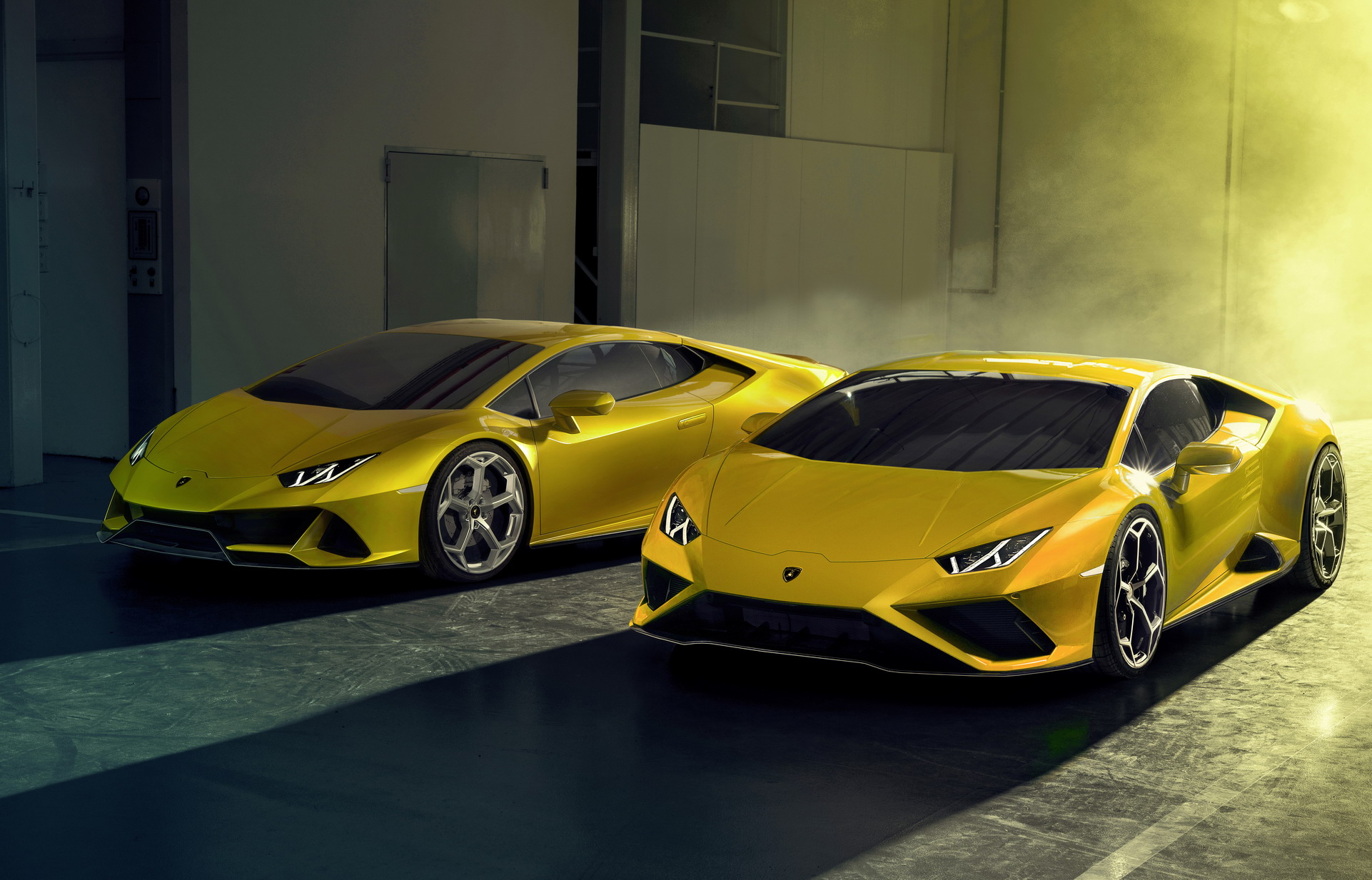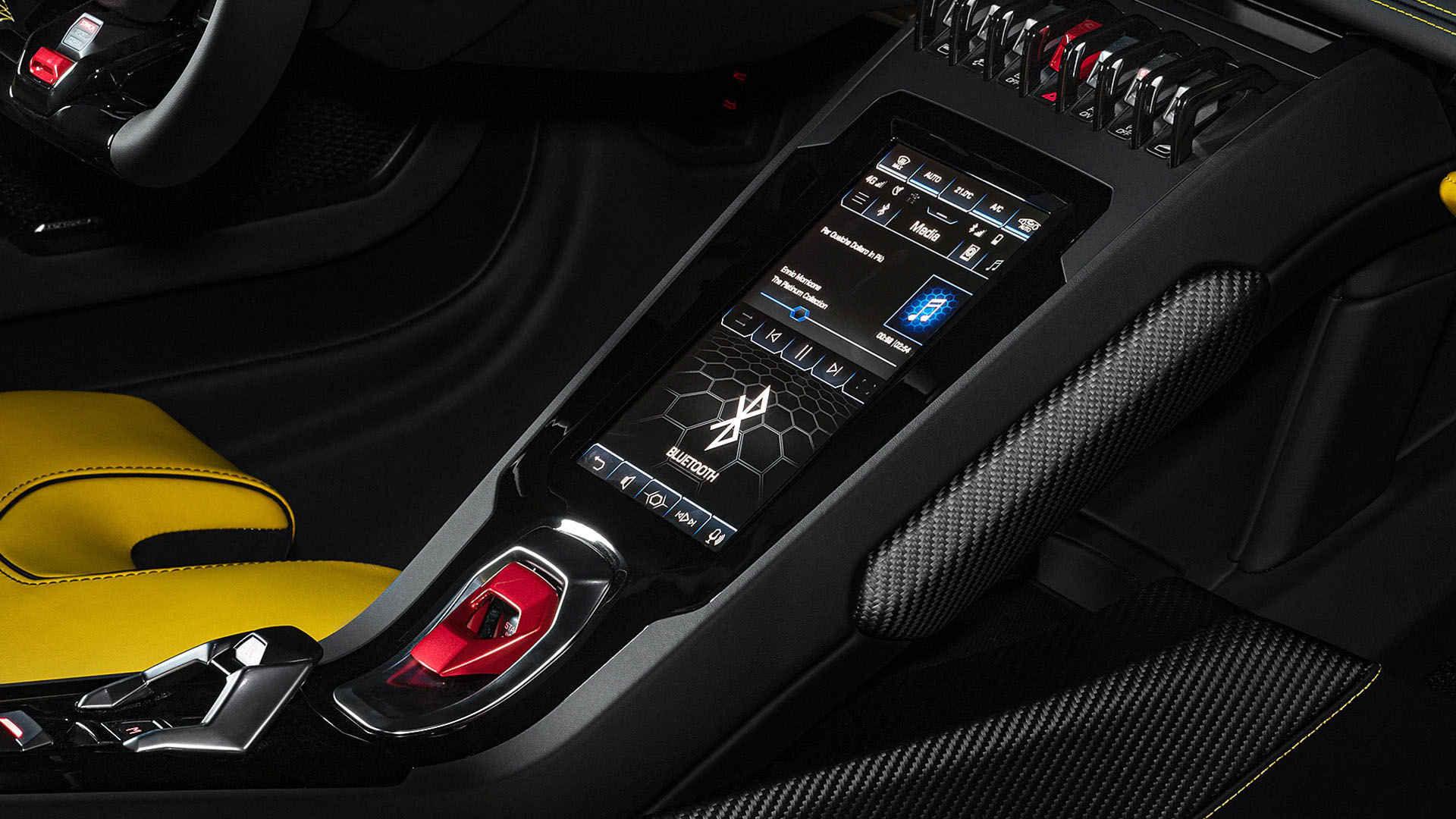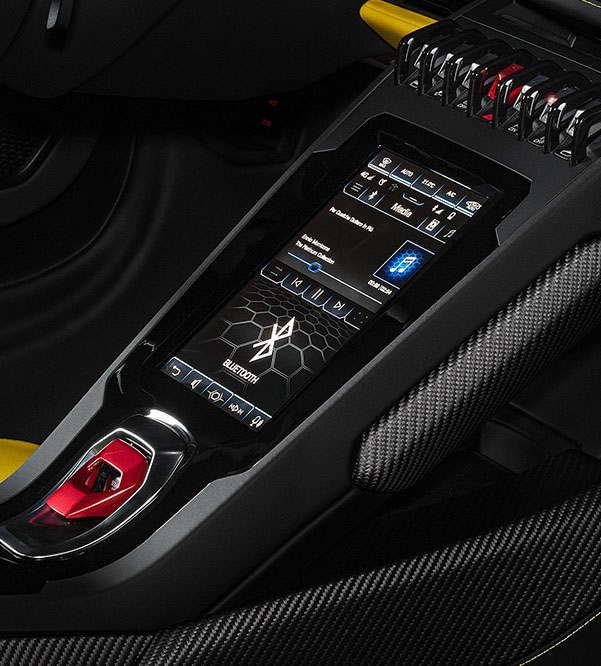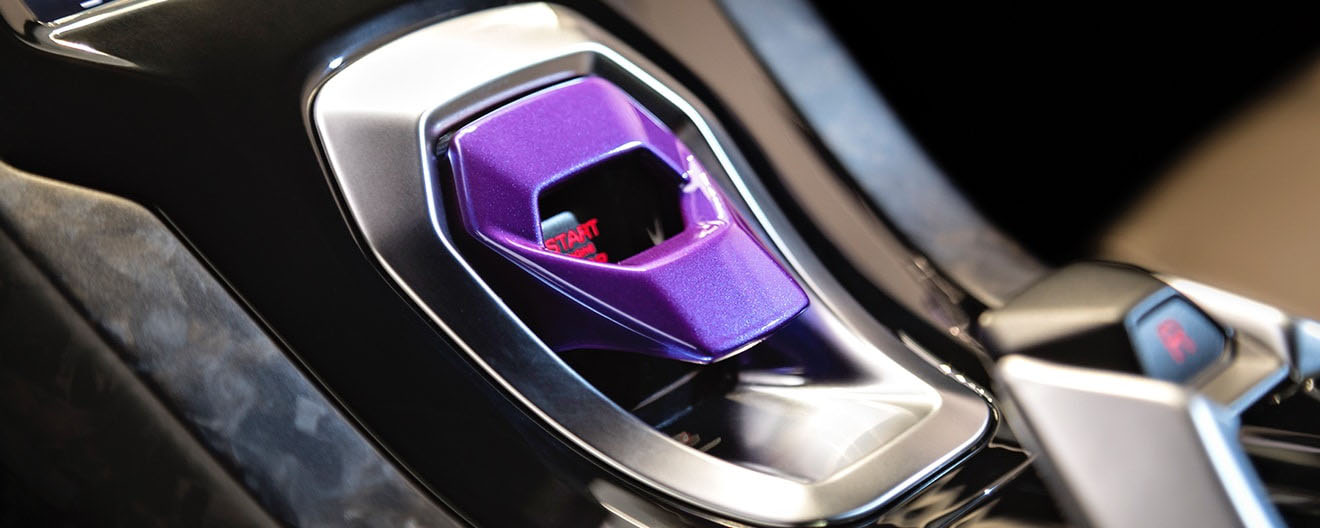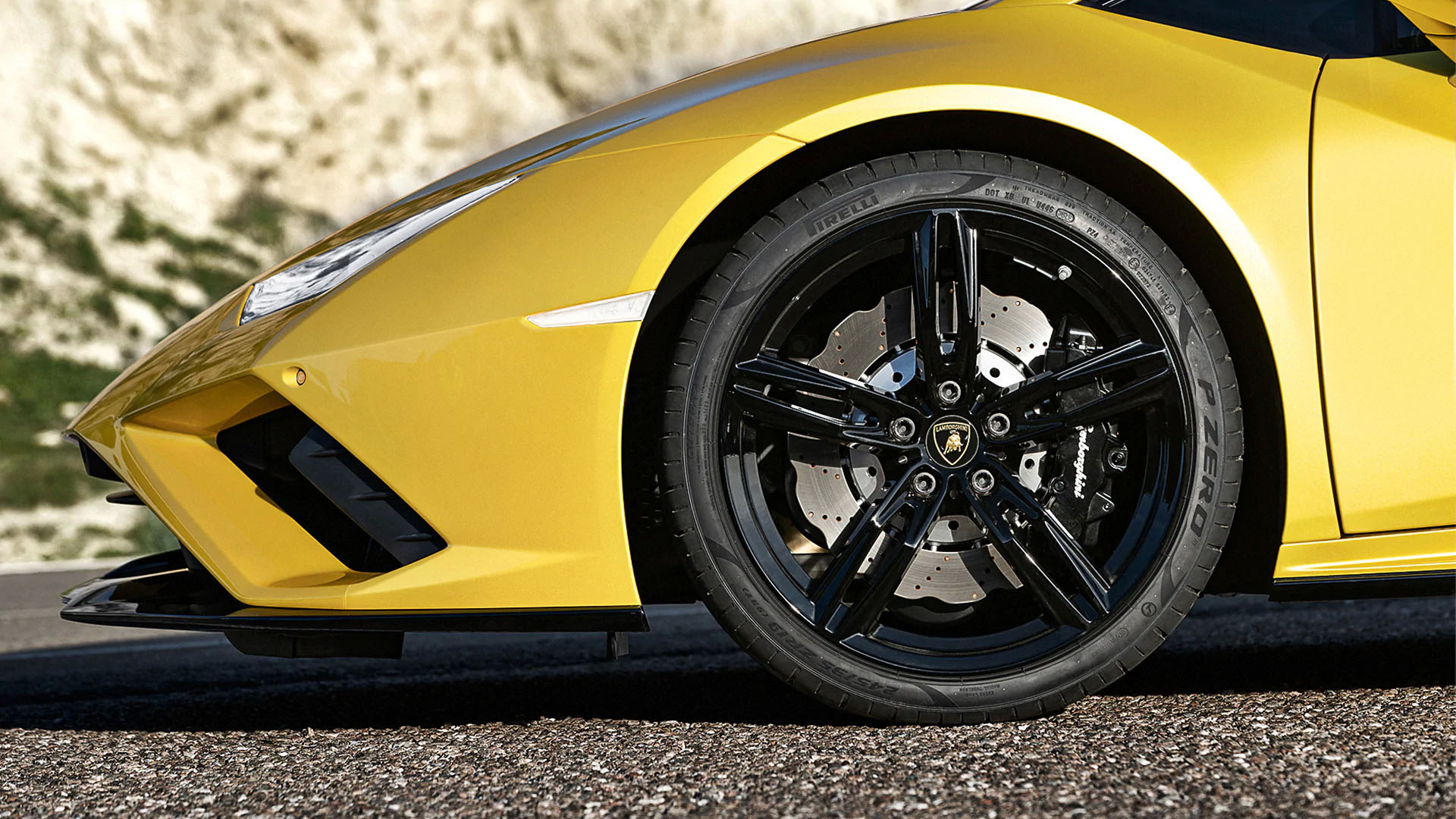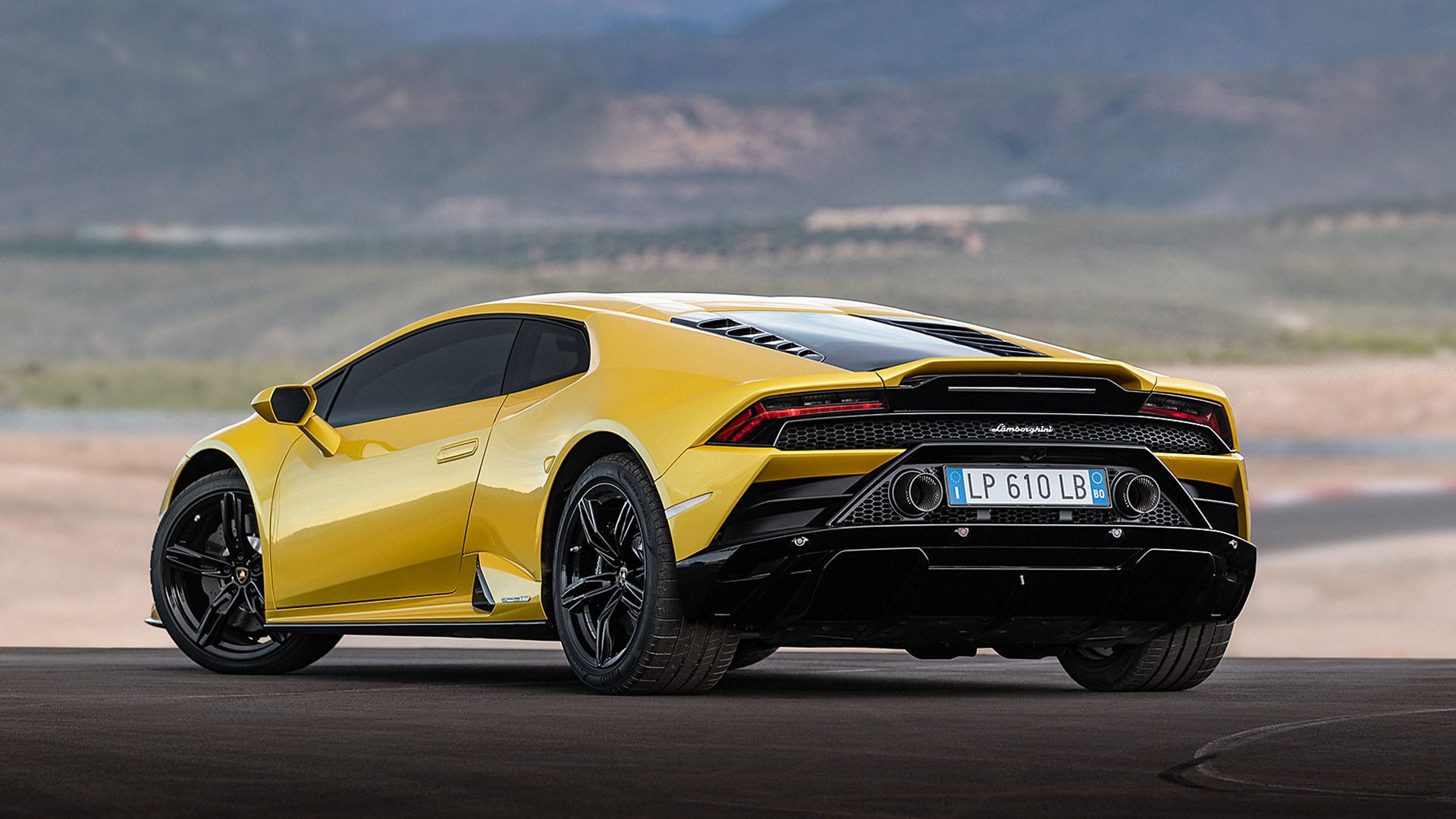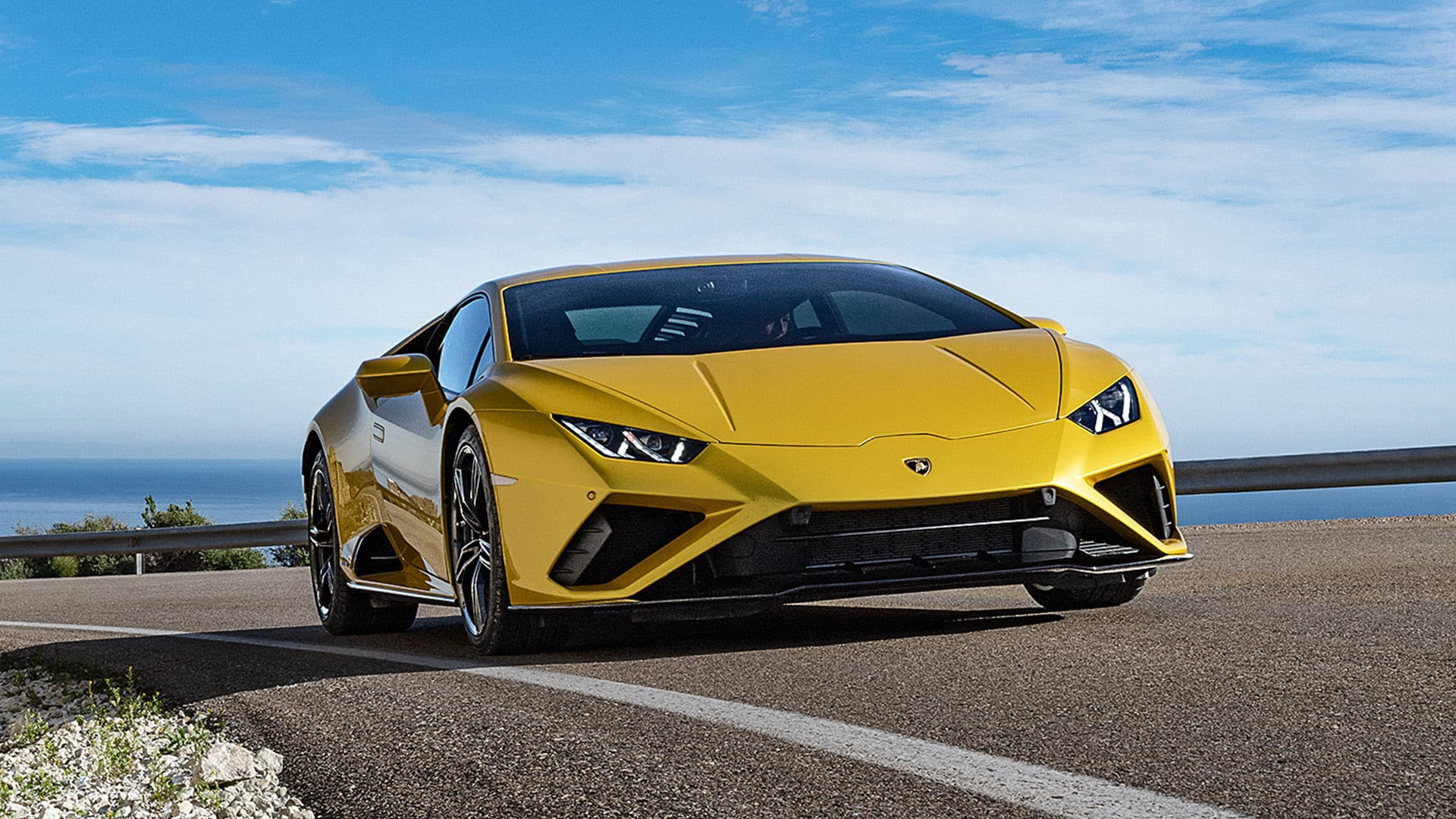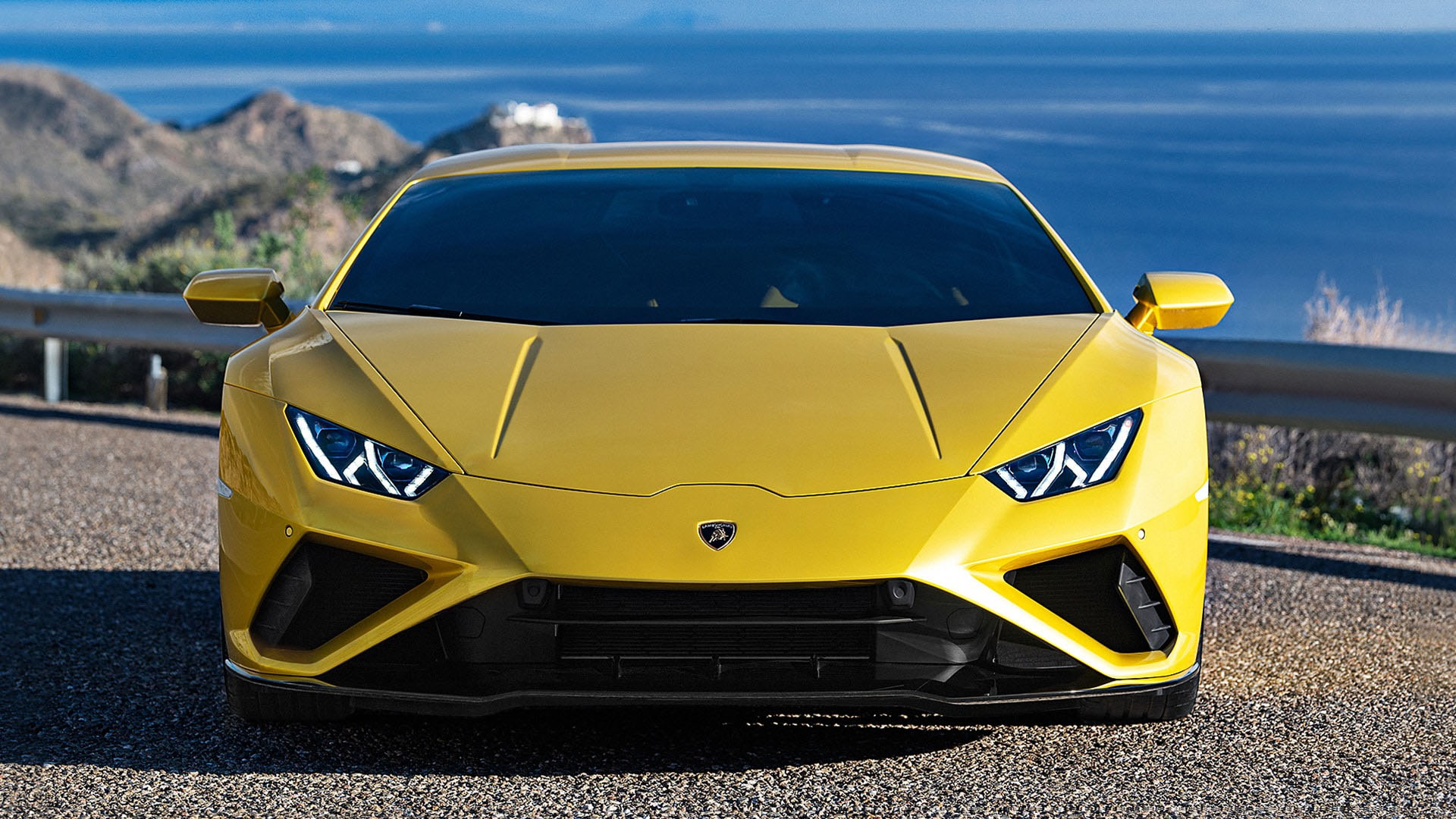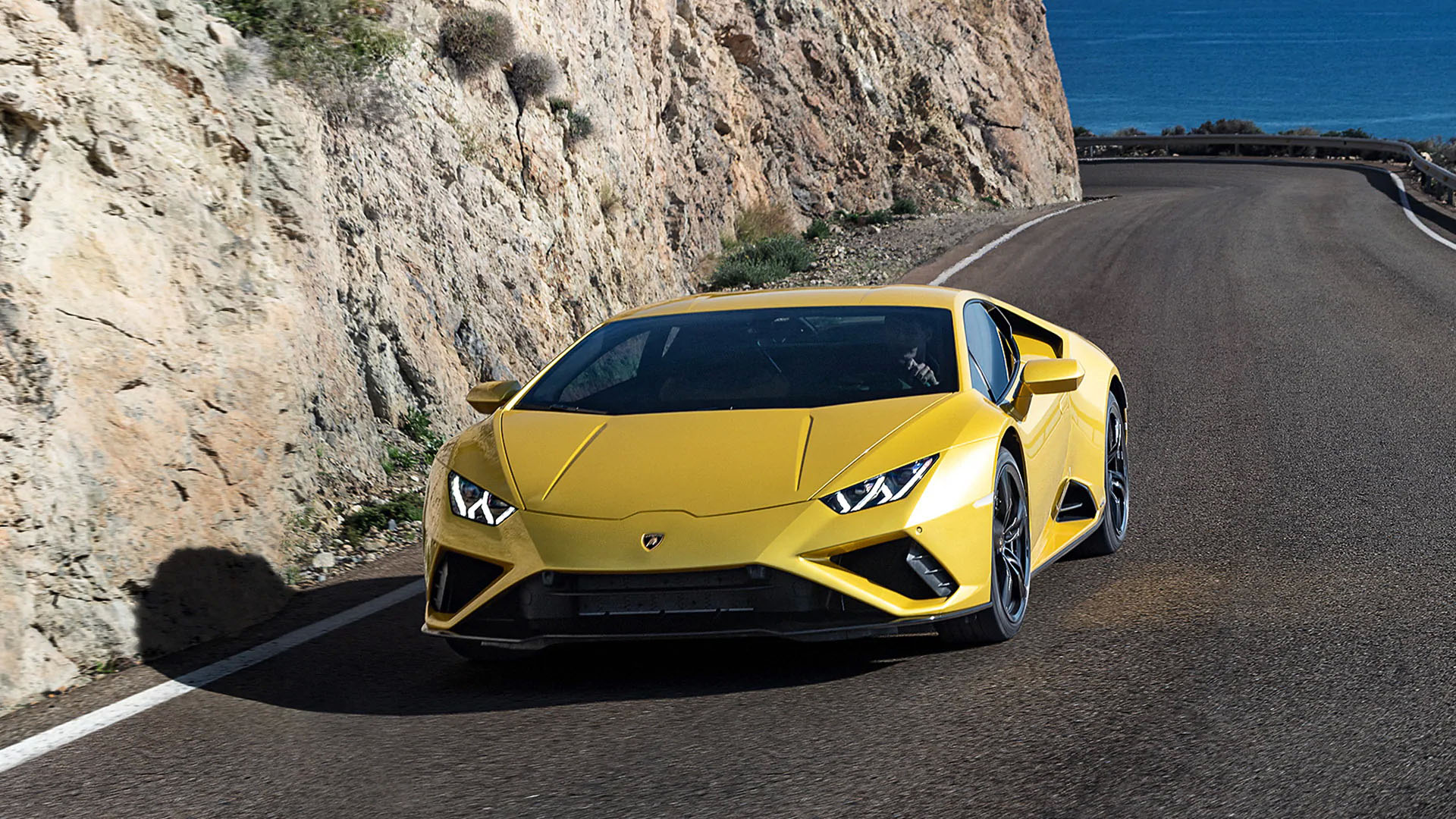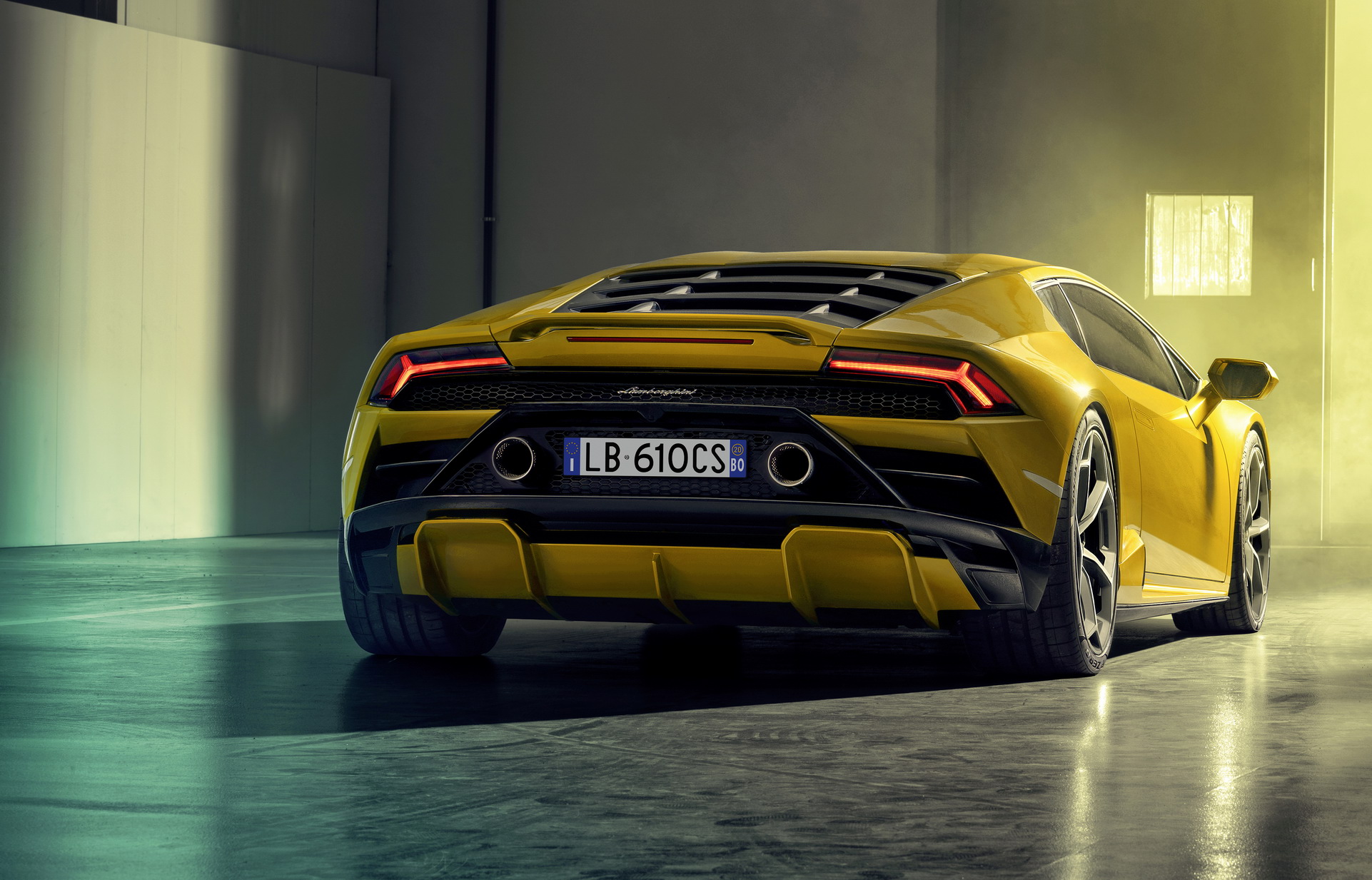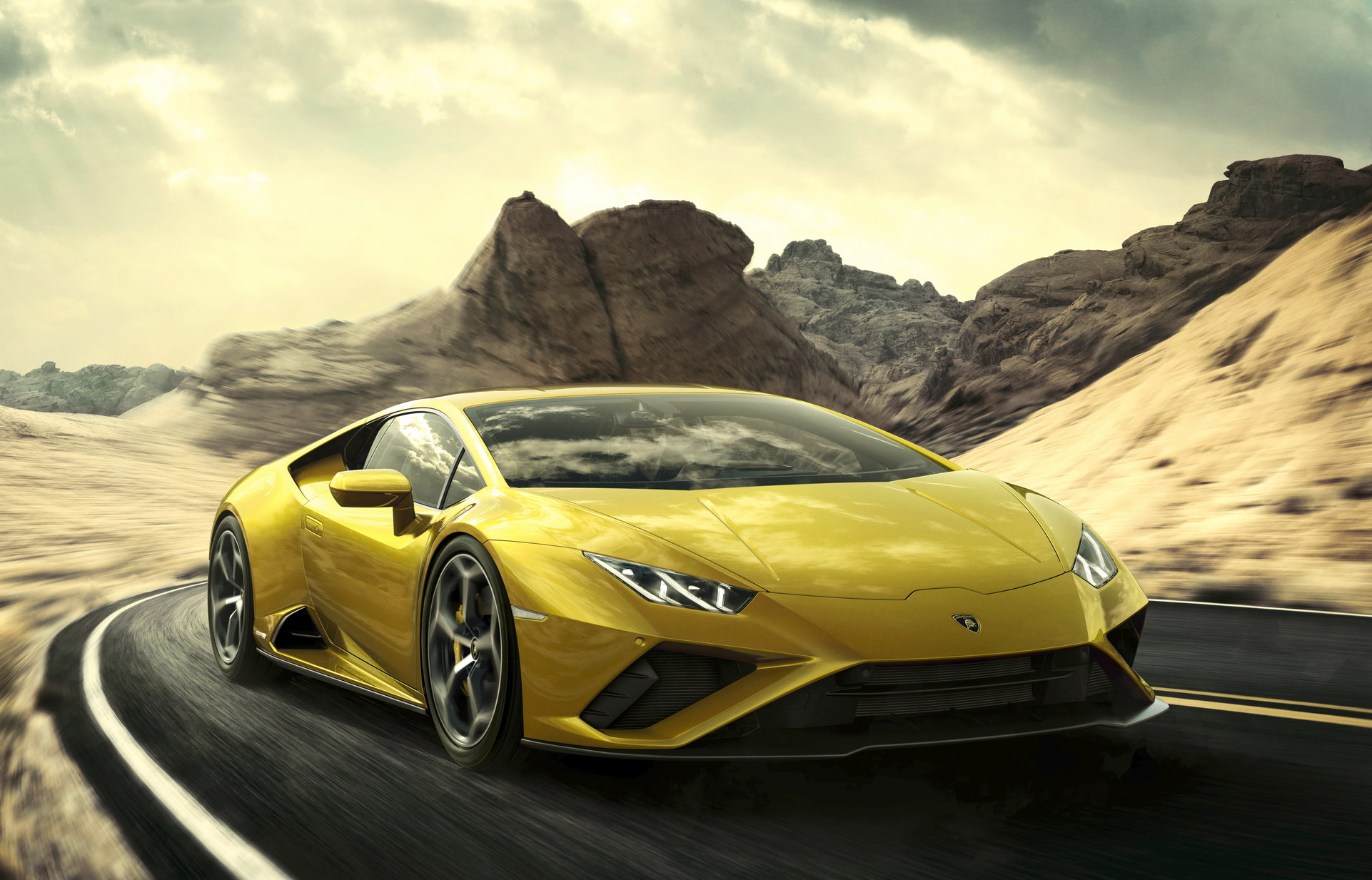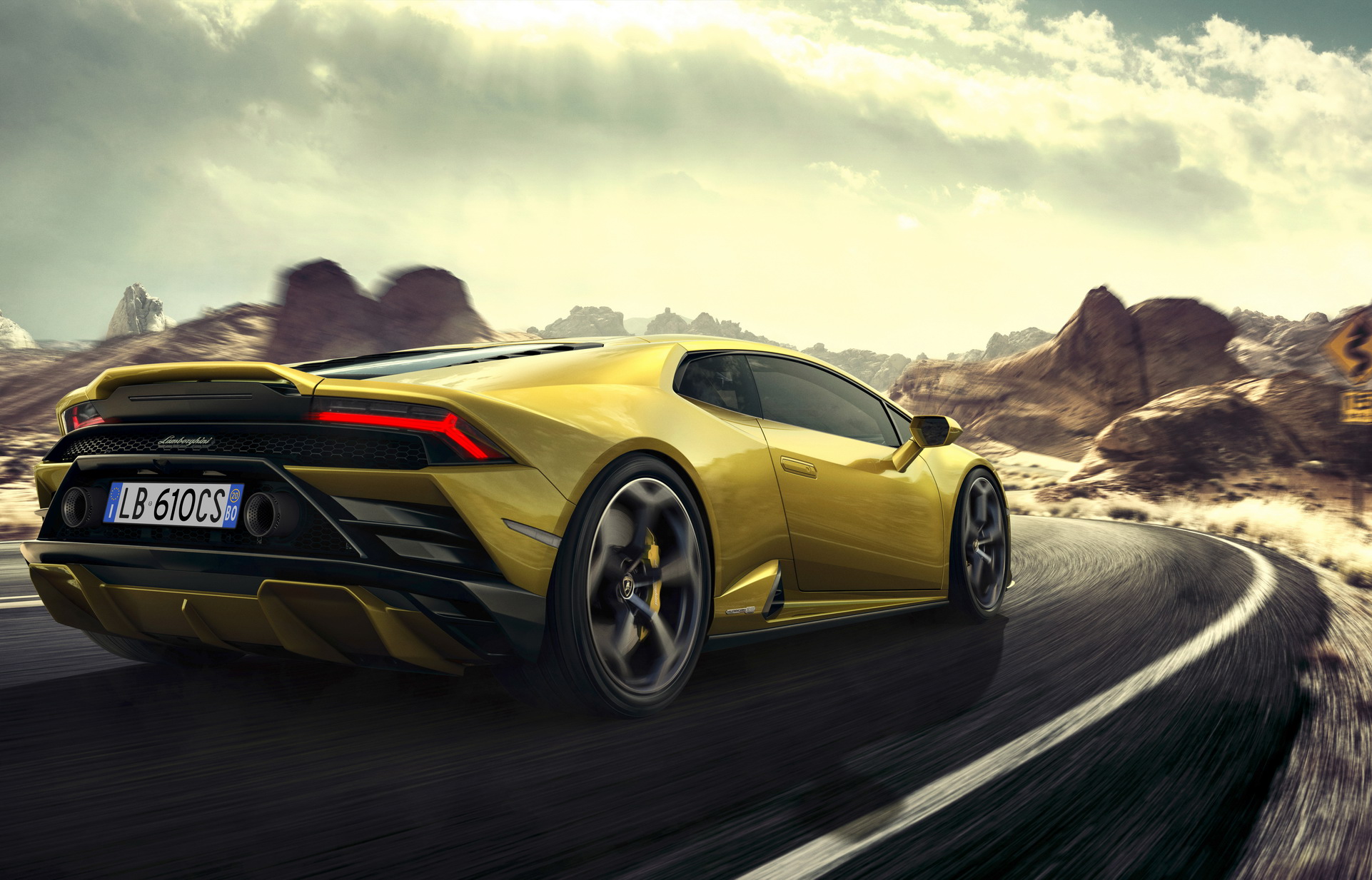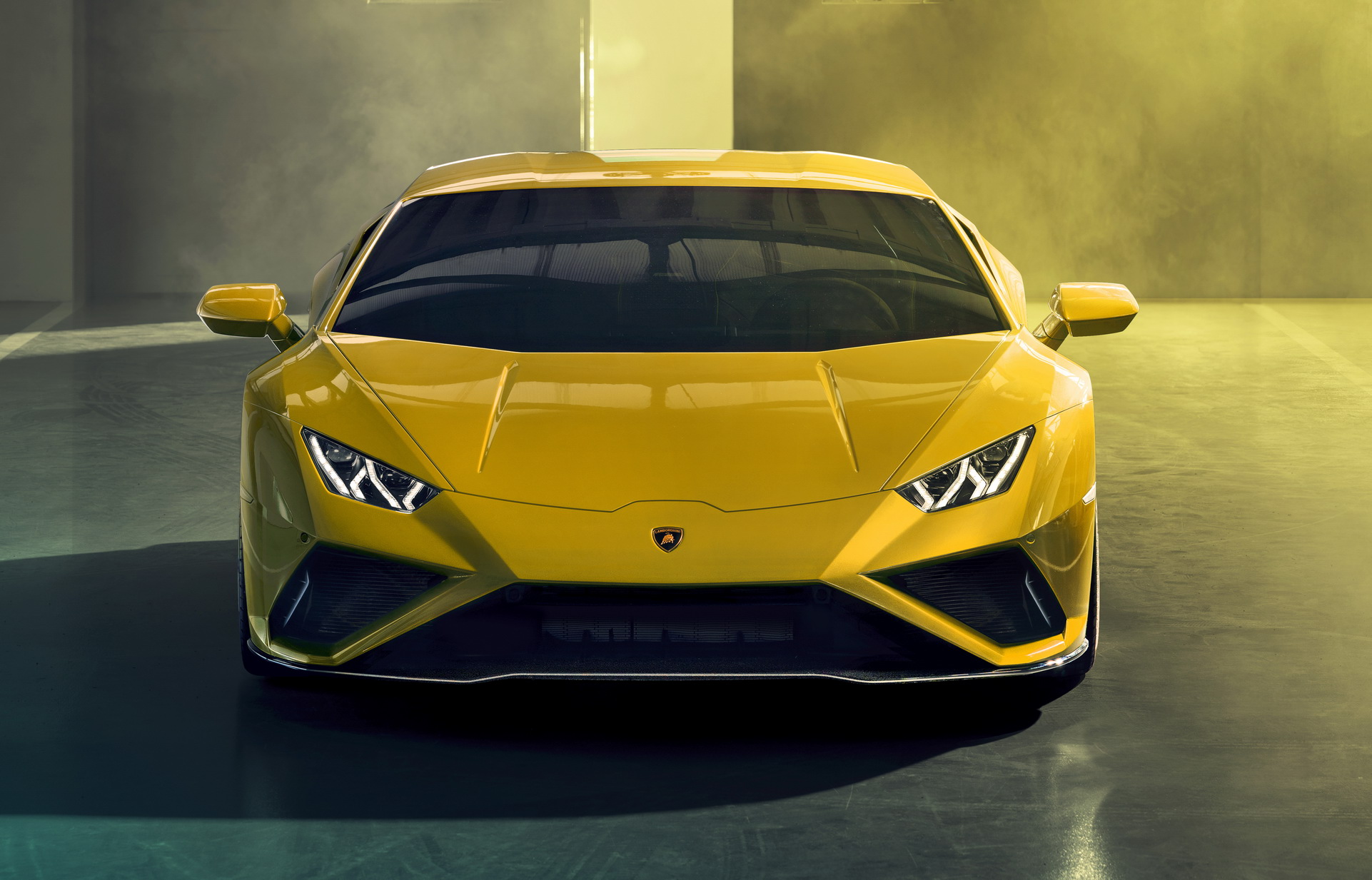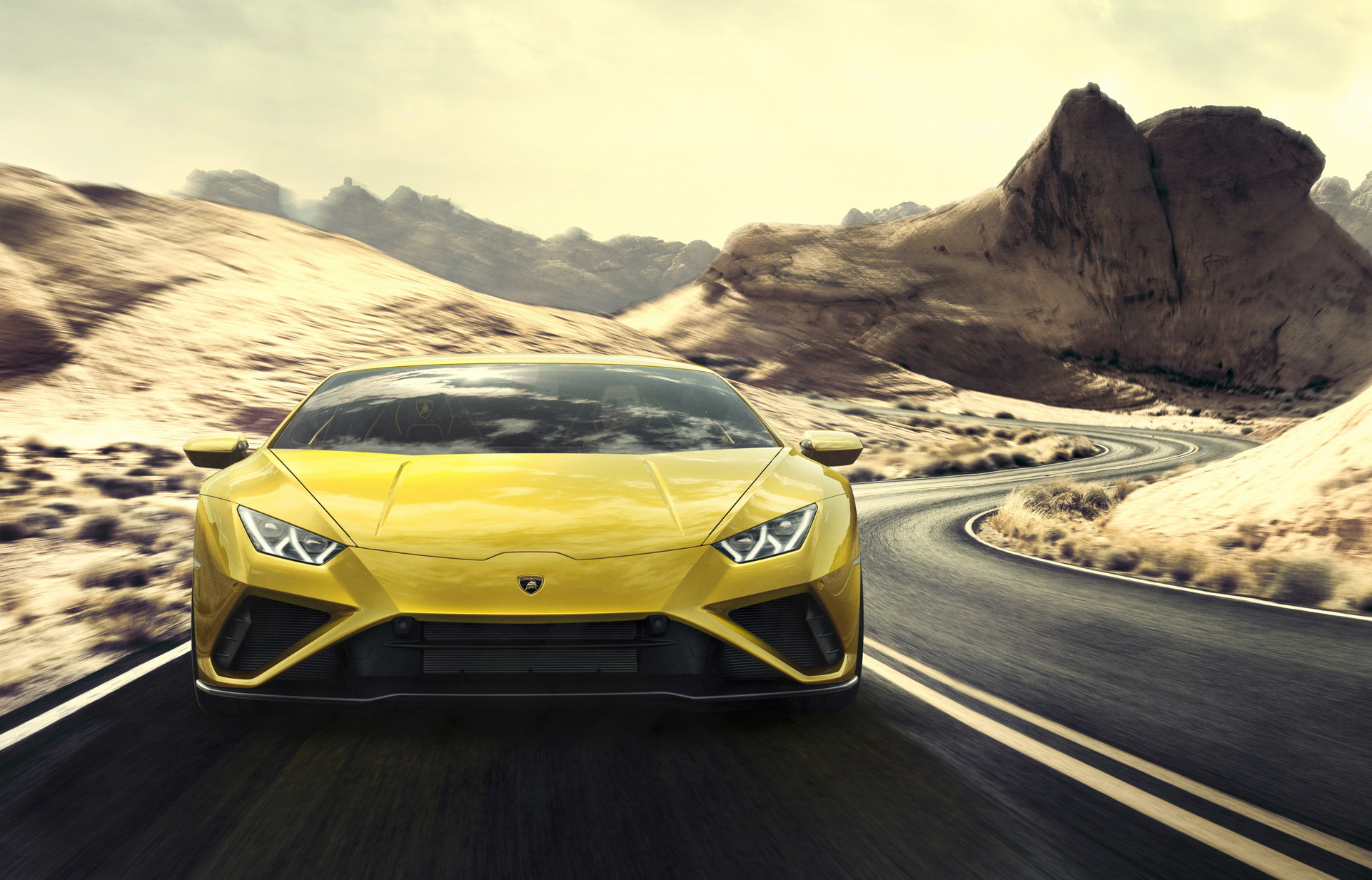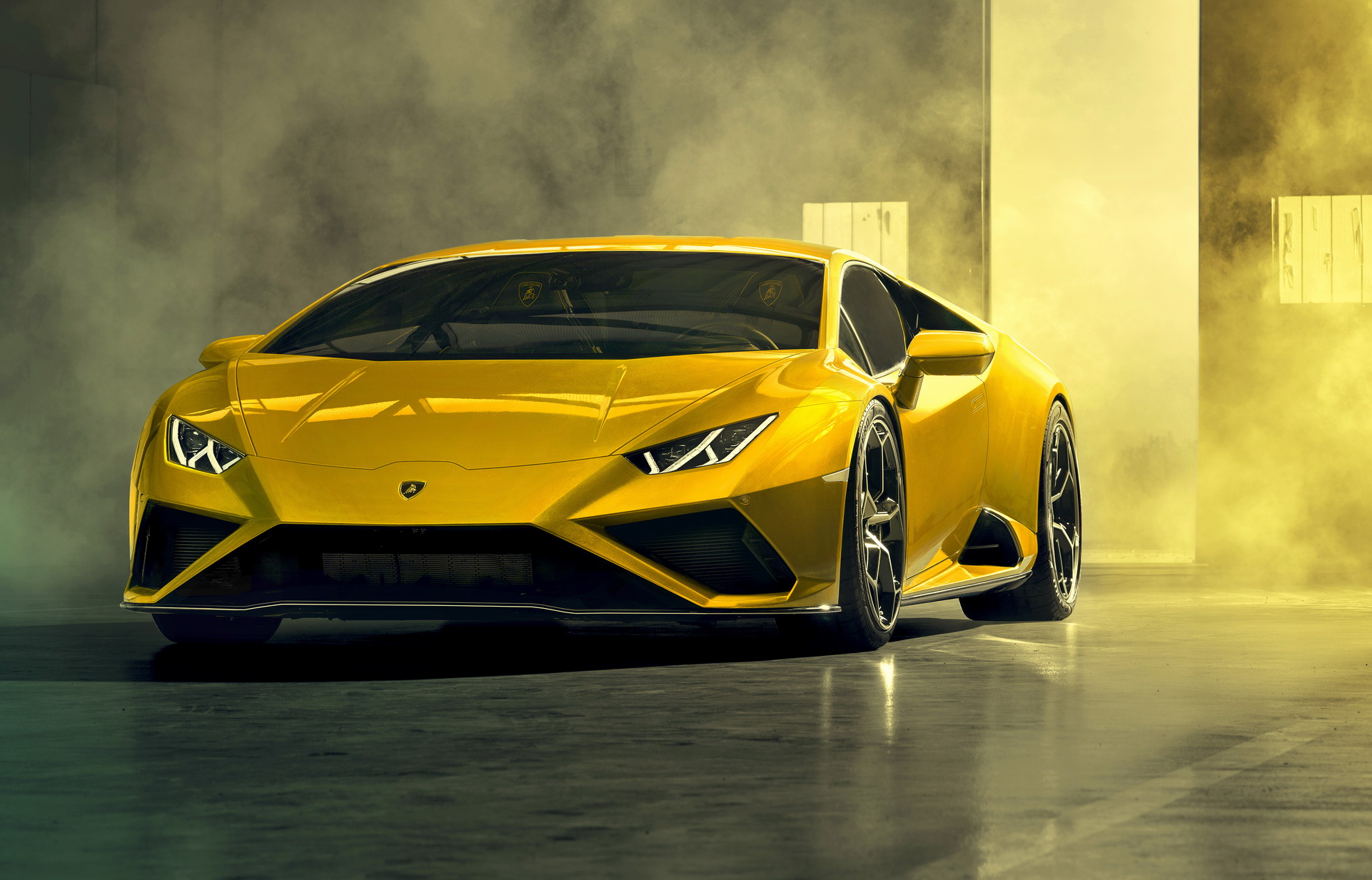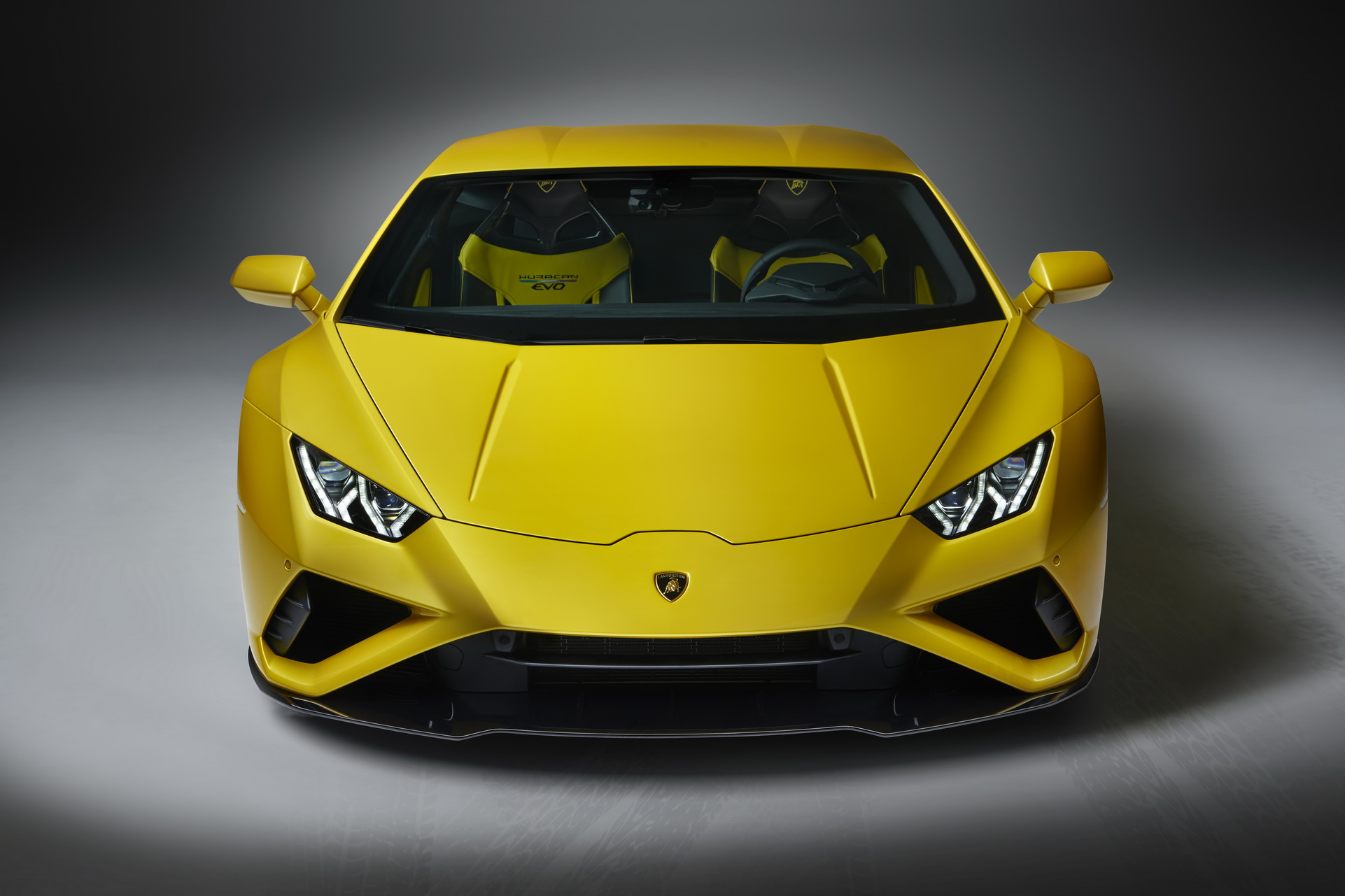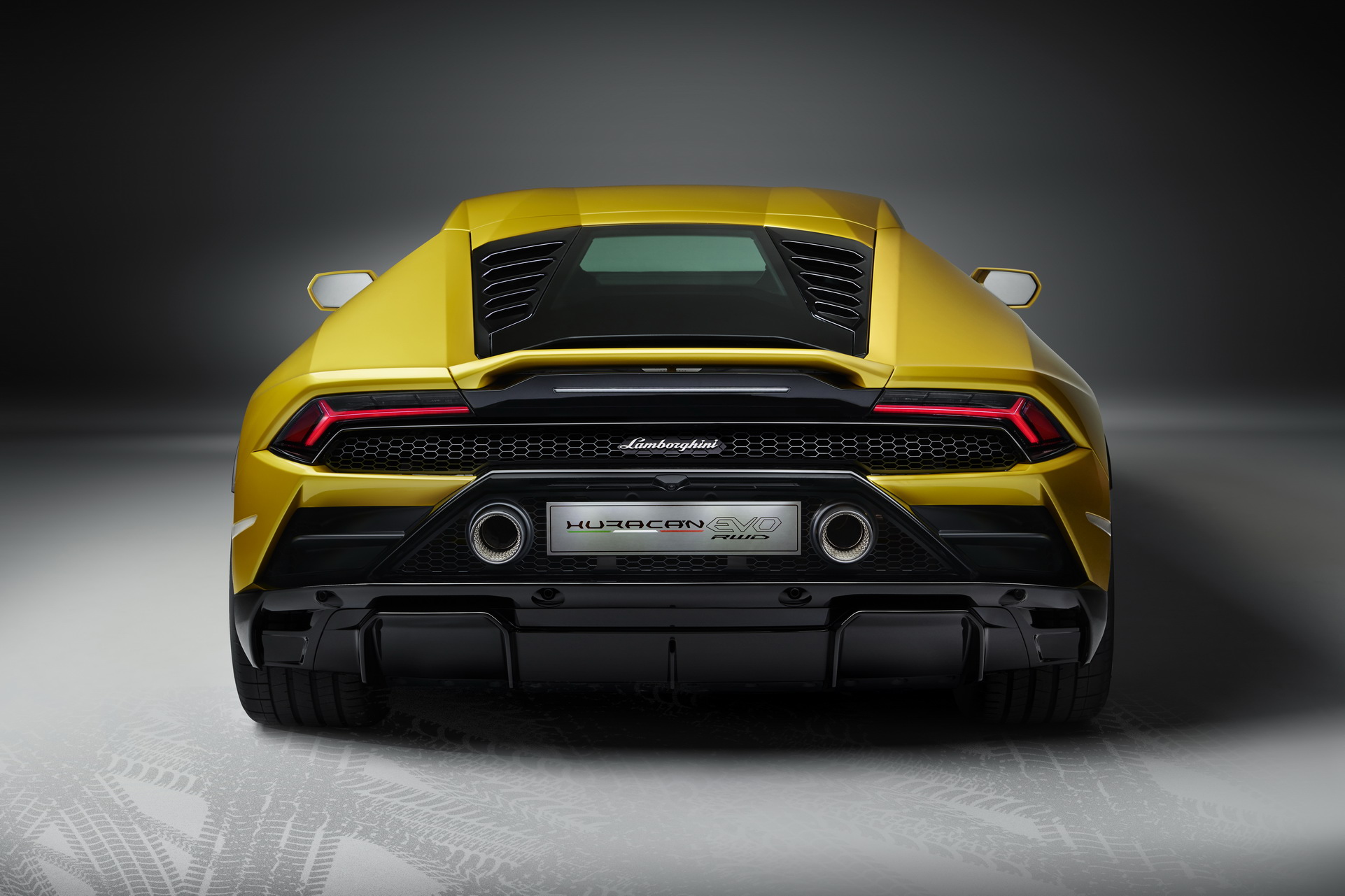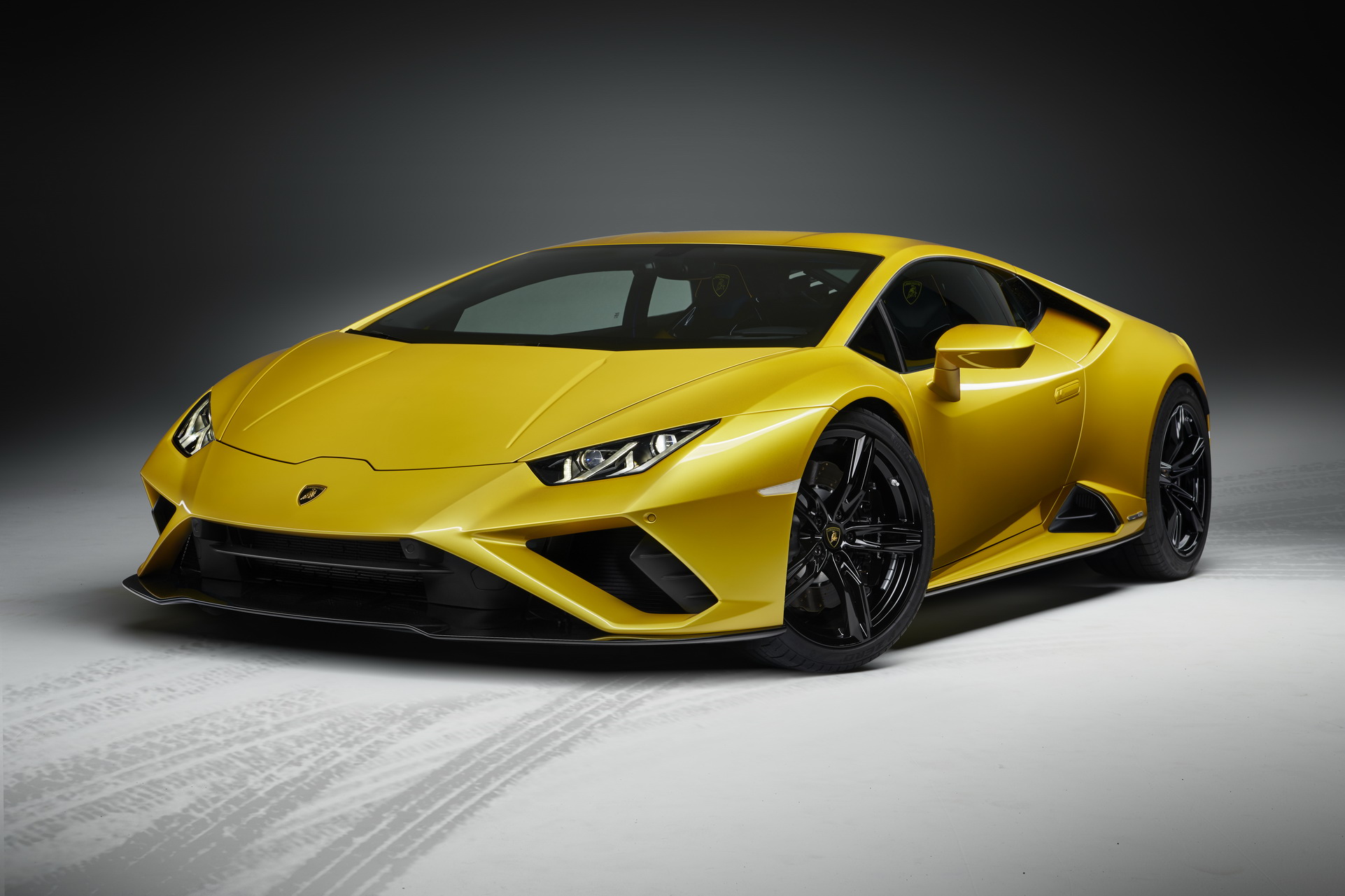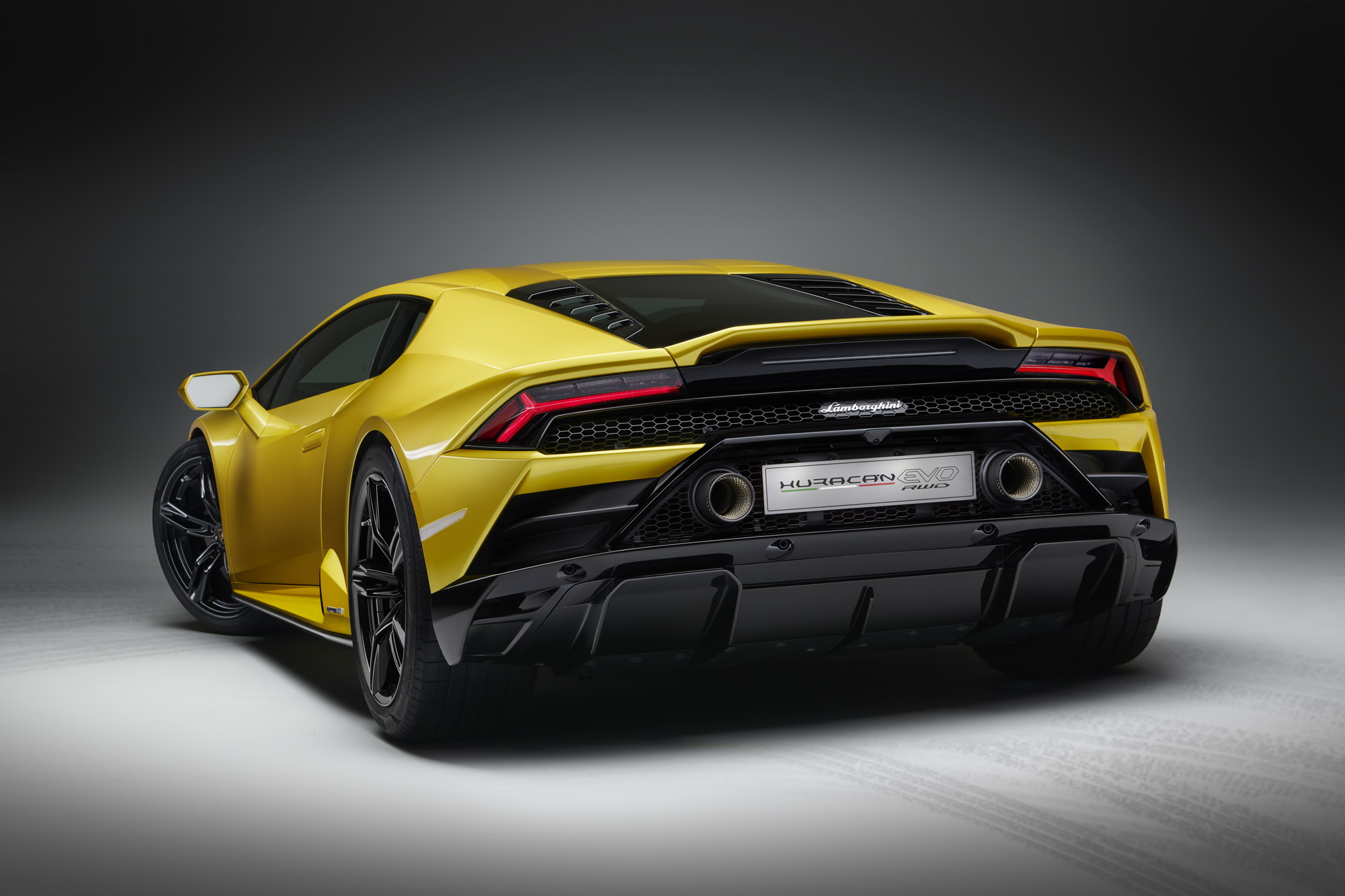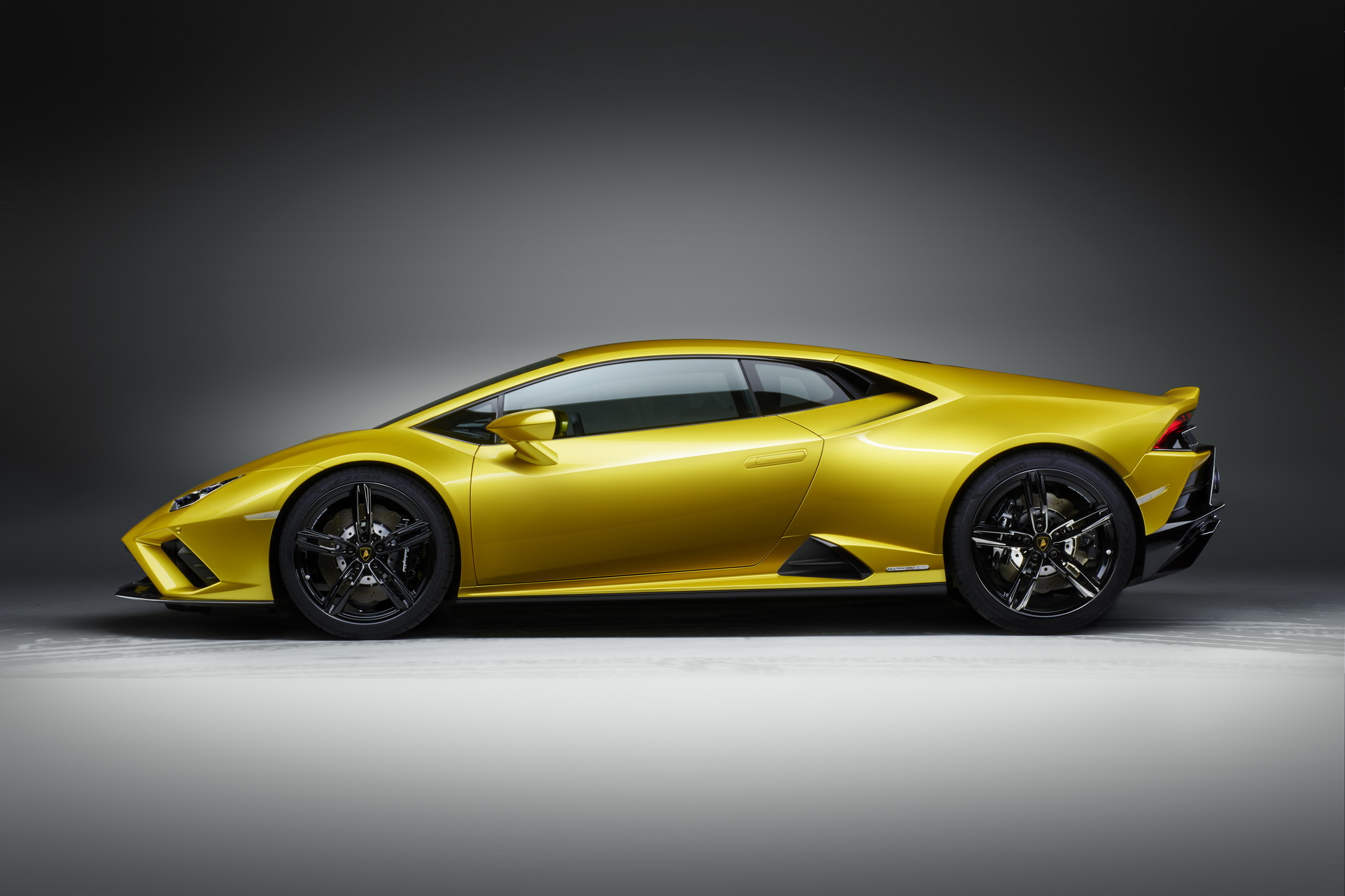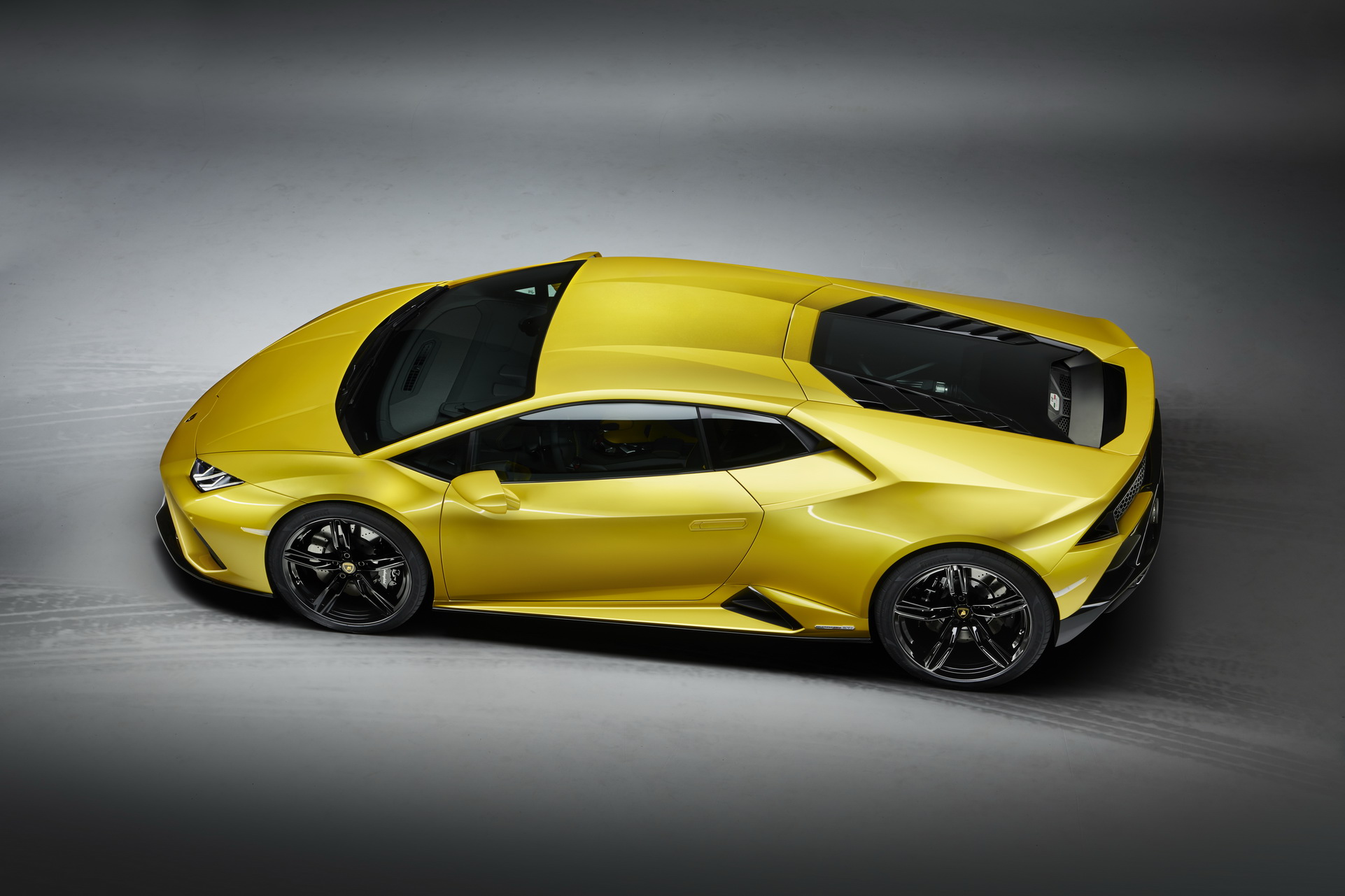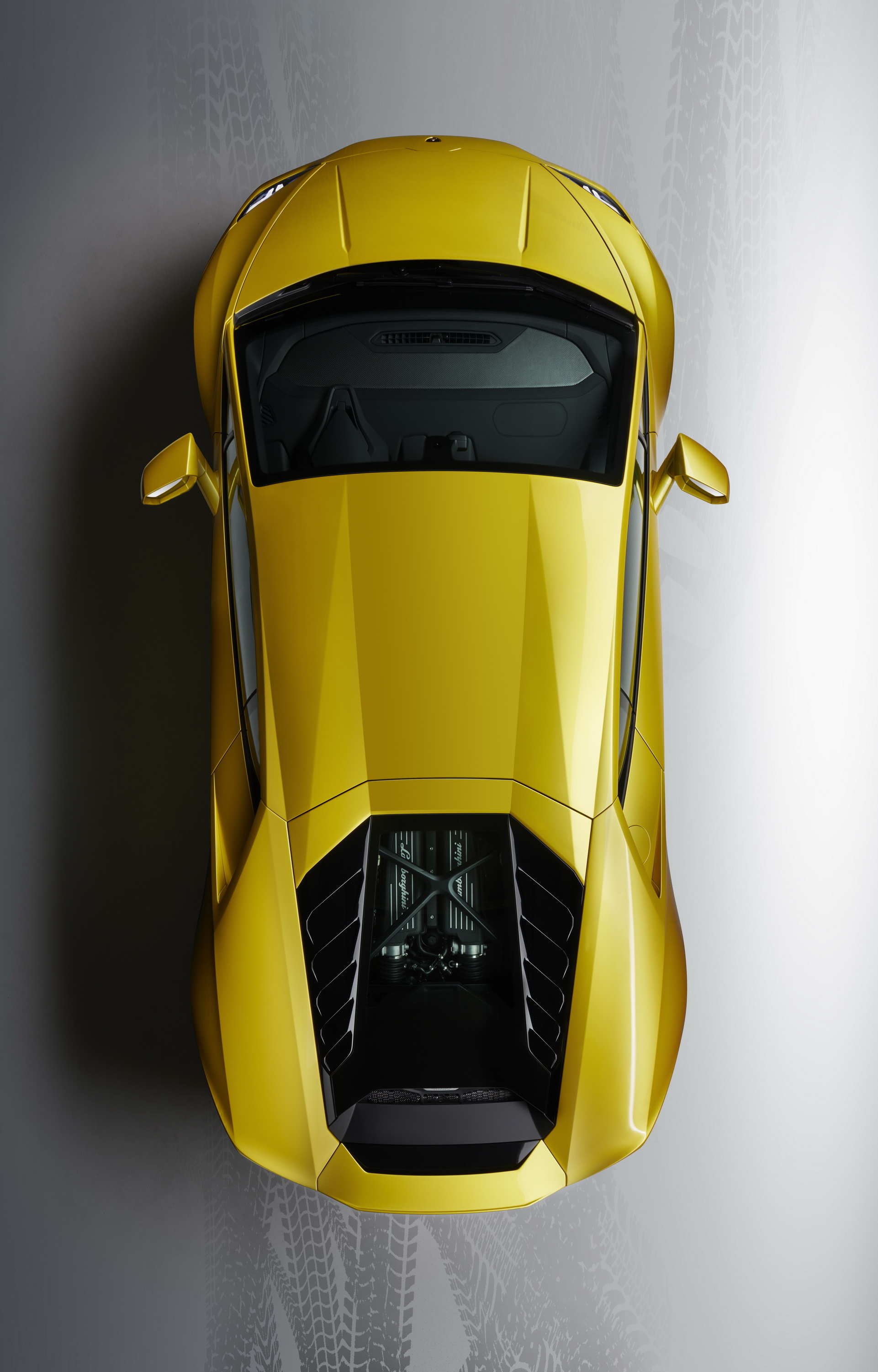A year on from the debut of the re-styled and re-engineered Huracan EVO and Lamborghini has officially presented a new rear-wheel drive derivative, aptly named the Huracan EVO Rear-Wheel Drive (RWD).
Not the dandiest of names, especially for an Italian supercar, but Lamborghini promises to “put the driver at the center of the driving experience”, much like its predecessors, the 2009 Gallardo LP 550-2 that re-introduced RWD to Lamborghini’s range after a decade or so, and the original Huracan before it.
“The Huracán EVO rear-wheel drive puts the car in the driver’s hands: the driving experience is delivered by the hardware,” says Lamborghini CEO, Stefano Domenicali. “This car reminds the driver of Lamborghini’s pure engineering origins: the driver is at the center of the Huracán EVO RWD’s performance, with unfiltered feedback and an emotive and more engaging driving experience controlled by the pilot.”
Read: Mysterious Lamborghini Prototype Spied, Could Be The Huracan Performante Evo
Tell me about the powertrain
Power comes from a de-tuned version of the all-wheel drive Huracan EVO’s, mid-mounted and Audi-built, 5.2-liter naturally-aspirated V10. It produces a slightly lower 602 HP (610 PS / 449 kW) at 8,000 rpm and 560 Nm (413 lb-ft) of torque at 6,500 rpm. That compares to the AWD model’s 631 HP 9640 PS / 471 kW) and 600 Nm (443 lb-ft). As with the former, it’s only available with a seven-speed dual-clutch transmission with launch control function.
However, less, sometimes means more, and by doing away with the standard car’s four-wheel drive system as well as four-wheel steering and four-wheel torque vectoring systems, the RWD model drops 33 kg (73 lbs) weighing in at 1,389 kg (3,062 lbs) without fluids, versus the AWD car’s 1,422 kg (3,135 lbs) dry weight.
As you may suspect, it also results in reduced traction making it a hair slower than the all-wheel drive Huracan requiring 0.4 sec more for the 0-62 mph (100km/h) sprint at 3.3 sec and 0.3 sec more for the 0-124 mph (200km/h) run at 9.3 sec. On the bright side, the RWD Huracan EVO maintains the same top speed of 202 mph (325 km/h) as the AWD version.
What else is different?
While slower than the Huracan EVO AWD, Lamborghini says the RWD car has been engineered to offer a more fun-to-drive (read less safe in inexperienced hands) experience in both dry and wet conditions. Much of that has been achieved through the new Performance Traction Control System (P-TCS) calibrated specifically for the rear-wheel drive EVO, delivering torque even when the car is realigning following drifting or side-slipping.
“Whereas a ‘normal’ traction control system delivers a sharp decoupling, waiting for a car to become completely stable before delivering torque again, the P-TCS car delivers torque in advance, avoiding a harsh torque cut and assuring better traction when exiting a corner,” says Lamborghini.
Also Read: Playboy Model Drives Lamborghini Huracan Into Pool, Blames High Heels
The system offers three familiar driving modes selected through a steering wheel button, beginning with the more protective ‘STRADA’ that minimizes rear wheel slippage. Moving on to ‘SPORT’ allows for more slip and larger slide angles while ‘CORSA’ is calibrated to achieve the rear-wheel slip that optimizes the car’s traction and agility when exiting a corner.
Lamborghini claims that the redesigned P-TCS improves smoothness of intervention by 30% compared to the previous Huracán RWD model, corner-exit traction by 20% and enhances oversteer by 30%.
The RWD model that has a front/rear weight distribution of 40/60 comes with steel springs and hydraulic dampers, but the “MagneRide” electromagnetic dampers are available as an option too.
How can you tell it apart from the AWD Huracan EVO?
The Italians made some minor design tweaks to differentiate it from the all-wheel drive coupe including a new front splitter, vertical fins within the larger, framed front air intakes, and a high-gloss rear bumper incorporating a new diffuser. The RWD model rides on 19-inch Kari rims wrapped in specially-developed Pirelli P Zero tires covering ventilated and cross-drilled steel brakes, while as an option, 20-inch rims and carbo-ceramic brakes are available.
Ok, so what will it cost me?
A well-equipped Alfa Romeo Stelvio less than the standard AWD Huracan EVO in the States, as prices for the RWD model start at $208,571 compared to the former’s $261,274 MSRP. In the UK, the RWD Huracan EVO is listed at £137,000 or about £28,000 less than the AWD model.
First customer deliveries of the Huracan EVO RWD are set to begin in spring this year.




